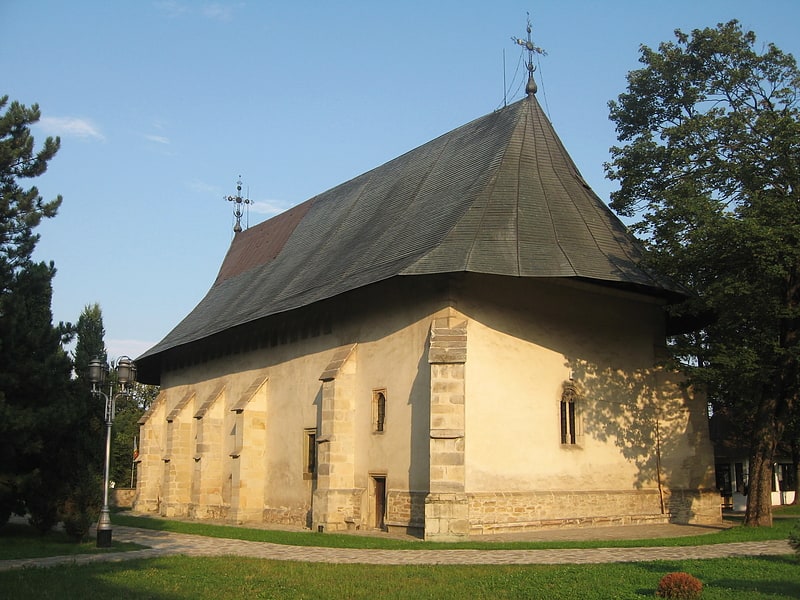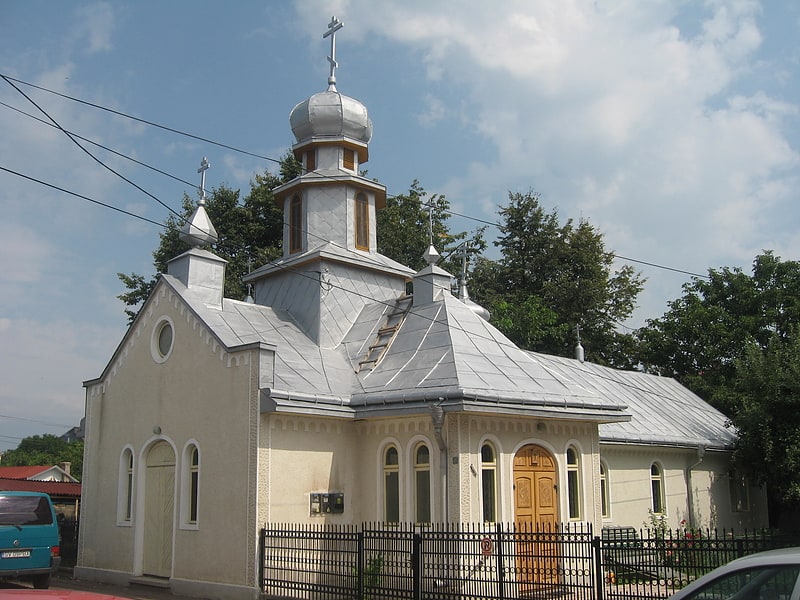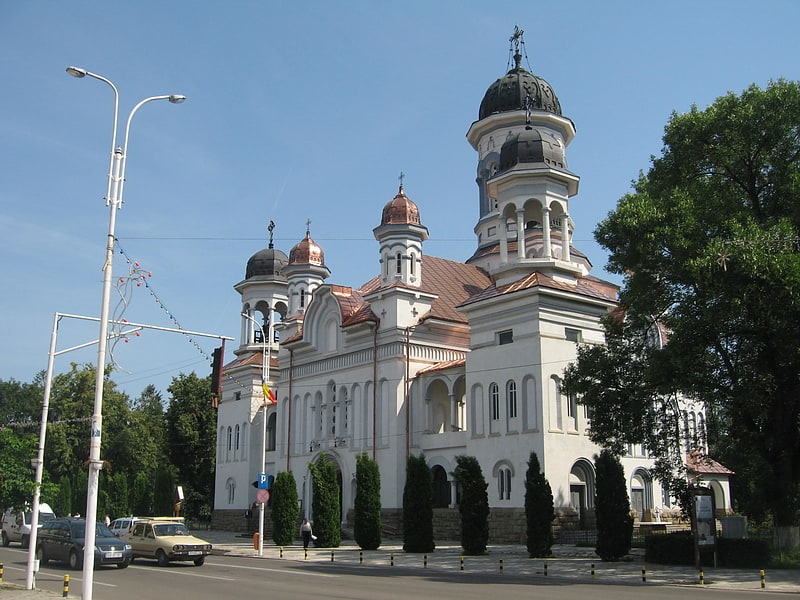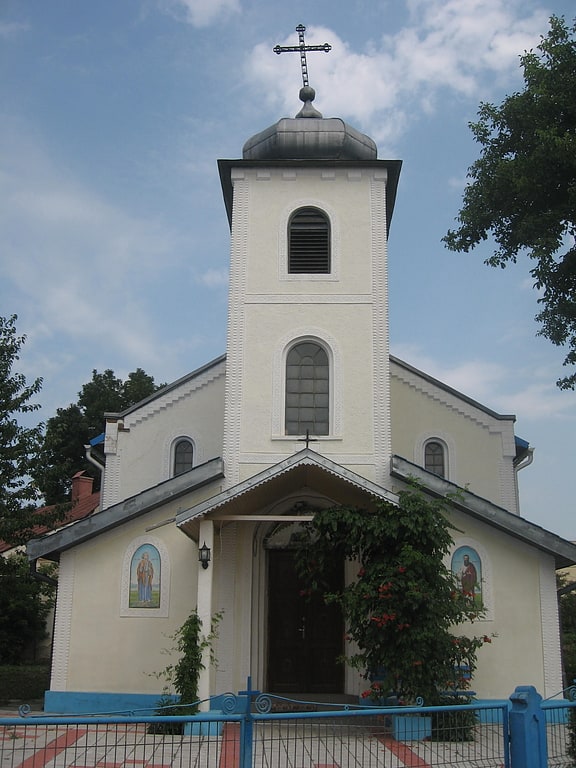Discover 6 hidden attractions, cool sights, and unusual things to do in Rădăuți (Romania). Don't miss out on these must-see attractions: Bogdana Monastery, Templul Mare, and Biserica lipovenească din Rădăuți. Also, be sure to include Casa de cultura in your itinerary.
Below, you can find the list of the most amazing places you should visit in Rădăuți (Suceava).
Table of Contents
Bogdana Monastery

Also known as: Mănăstirea Bogdana
Monastery in Rădăuți, Romania. Bogdana Monastery is a Romanian Orthodox monastery in the town of Rădăuți, northern Romania. Its church is the oldest still standing religious building in Moldavia. The monastery was built by Bogdan I of Moldavia sometime around 1360.
It was to become his and some the Mușatini voievods necropolis. Here are buried all the rulers of Moldavia from Bogdan I to Alexandru cel Bun. There are ten graves inside the monastery's church:
- seven in the naos:
- Bogdan I (in the south-eastern corner)
- Lațcu Voievod (besides the same wall as Bogdan I)
- an unmarked grave supposedly Maria's–Bogdan I's wife, or Ana's–Lațcu's wife; the grave is at ground level and not above it as the other ones
- Ștefan I (on the northern wall)
- Roman I (on the northern wall)
- Bogdan, brother of Alexander the Good (on the northern wall)
- Bogdan, son of Alexander the Good (on the northern wall)
- three in the pronaos:
- Doamna Stana, wife of Bogdan III cel Chior and the mother of Ștefăniță Vodă (on the northern side)
- Anastasia, daughter of Lațcu (on the northern side)
- Bishop Ioanichie (died 1504) (before the pronaos door)
The graves were attended to, and marked properly by Ștefan cel Mare. The rocks on top of the graves were created by Jan (c. 1480) at the order of Ștefan cel Mare, "in a style that is different in principle from the oriental decorative sculpture" (P. Comărnescu). They are decorated with Byzantine-oriental ornaments like palmata–a stylized palm plant leaf and local motives like leaves of beech, ash tree leaves, elm tree leaves.
The first internal painting of the church is from the times of Alexandru cel Bun (14th century). In 1558 Alexandru Lăpușneanu started the restoration of the original painting and following year enlarged the church building. Other restorations happened in the 18th and 19th centuries: between 1745 and 1750, in the time of Bishop Iacob Putneanul and in 1880 when Epaminonda Bucevschi, a Bukovinean painter, created the current frescoin tempera.[1]
Address: Bogdana Voda Street 6, 725400 Radauti
Templul Mare

The Great Temple of Rădăuți is a Jewish place of worship in Rădăuți, located on 1 Mai Street no. 2, in the city centre. It was built in 1883, some sources erroneously indicate 1879 as the year of construction.
The Jewish Temple in Rădăuți was included on the List of Historical Monuments of Suceava County in 2015, with the LMI code SV-II-m-B-05599.
Address: Strada 1 Mai nr. 2, Rădăuți
Biserica lipovenească din Rădăuți

Church
Address: 8 Strada Libertății, Rădăuți
Casa de cultura

Concerts and shows, Theater
Address: Str. Bogdan Voda nr. 12, Rădăuți
Biserica Pogorârea Sfântului Duh din Rădăuți

Church
Biserica greco-catolică ucraineană

Church
Address: Strada Crișan 3, 725400 Rădăuți